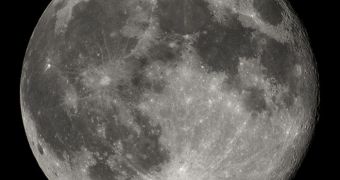According to a panel of space experts, scientists and engineers, the Moon should be our first stop in the quest to start mining the solar system for precious resources.
Our natural satellite won the “competition” over Mars and near-Earth objects (NEO) primarily because it features other resources as well, including ammonia and methane, and because it has vast amounts of water.
The precious liquid can be used for a variety of purposes, ranging from producing drinking water for astronauts, air for habitable bases, and fuel for rockets and spaceships. Additionally, water is required in almost all mining processes.
The panel that made this assessment was asked to determine where mining explorations should start, if humankind was to expand its base of operations from our planet to elsewhere in the solar system.
“I think the Moon is clearly the answer. I could easily make a business case for going to the Moon,” explained Penguin Automated Systems chief technology officer Greg Baiden.
The expert was making a presentation at the Space Manufacturing 14: Critical Technologies for Space Settlement conference, which took place in Sunnyvale, California on October 29.
Baiden believes that it will be private companies that will open up the way to exploring the Moon, but he admits that governments will most likely have to get this field ready, by investing in space technologies and subsidies.
But the good news in all this is that actually mining the satellite could prove to be even easier than researchers anticipated before NASA's LCROSS mission. The flight proved that water-ice exists at the lunar south pole in 2009.
“We now know the water there is free water. It's unbound. Mining water on the Moon is going to be a lot easier than we thought,” said at the meeting Lunar and Planetary Institute scientist Paul Spudis.
Geologists and planetary scientists now estimate that water has been gathering at the lunar poles, deep inside permanently-shadowed craters, for billions of years, and that ample supplies are now available.
At the conference, panel members also drew attention to the fact that the technology required to start mining the Moon with robots already exists today.
“We've reached the point of teleoperations [operating robots remotely] now that I think it's feasible to mine the moon,” Baiden said. Due to the short distance separating us from the Moon, video and data feeds take between 1 and 2 seconds to go one way, Space reports.

 14 DAY TRIAL //
14 DAY TRIAL //